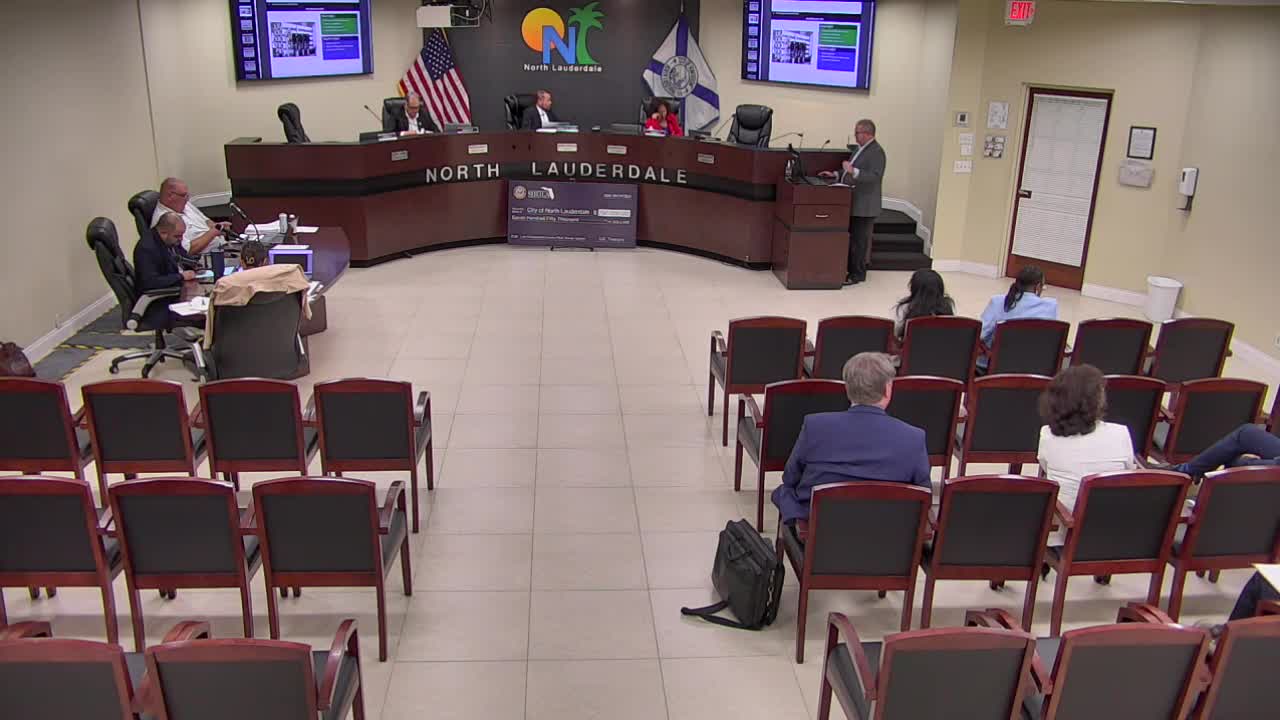City faces urgent decision on water treatment options
July 08, 2024 | City of North Lauderdale, Broward County, Florida

This article was created by AI summarizing key points discussed. AI makes mistakes, so for full details and context, please refer to the video of the full meeting. Please report any errors so we can fix them. Report an error »

In a recent government meeting, officials discussed critical upgrades to the city’s water treatment facilities, focusing on compliance with new PFAS regulations. The meeting highlighted three primary options for improving water quality, each with distinct capital and operational costs.
The first option involves rehabilitating the existing lime softening process, estimated to cost around $17.5 million over five years. However, this method is deemed less viable due to its inability to meet future regulatory standards. The second option combines lime softening with granular activated carbon or ion exchange, with costs ranging from $40 million to $42 million. The most expensive alternative is a standalone nano filtration system, which would require an investment of approximately $68 million.
The proposed nano filtration process would replace the current lime softening facility, allowing for a more efficient treatment of water. It is projected that 80% of the incoming groundwater would be treated, while the remaining 20% would need to be disposed of via a deep injection well. The exact location for this well is yet to be determined.
A decision matrix was developed to evaluate the options based on criteria such as capital costs, operational maintenance costs, compliance with future regulations, and the reliability of the technology. The scoring system indicated that all three options could achieve compliance with PFAS standards, which require a reduction from current levels of 30% to 4% within five years.
Funding alternatives for the project include state revolving funds, revenue bonds, and city reserves. However, concerns were raised about the financial implications of these options, with some officials warning that utilizing reserves could leave the city financially strained.
The city is under pressure to make a decision by October of this year to ensure compliance by early 2029. As discussions continue, officials are weighing the long-term benefits of each option against their immediate financial impacts.
The first option involves rehabilitating the existing lime softening process, estimated to cost around $17.5 million over five years. However, this method is deemed less viable due to its inability to meet future regulatory standards. The second option combines lime softening with granular activated carbon or ion exchange, with costs ranging from $40 million to $42 million. The most expensive alternative is a standalone nano filtration system, which would require an investment of approximately $68 million.
The proposed nano filtration process would replace the current lime softening facility, allowing for a more efficient treatment of water. It is projected that 80% of the incoming groundwater would be treated, while the remaining 20% would need to be disposed of via a deep injection well. The exact location for this well is yet to be determined.
A decision matrix was developed to evaluate the options based on criteria such as capital costs, operational maintenance costs, compliance with future regulations, and the reliability of the technology. The scoring system indicated that all three options could achieve compliance with PFAS standards, which require a reduction from current levels of 30% to 4% within five years.
Funding alternatives for the project include state revolving funds, revenue bonds, and city reserves. However, concerns were raised about the financial implications of these options, with some officials warning that utilizing reserves could leave the city financially strained.
The city is under pressure to make a decision by October of this year to ensure compliance by early 2029. As discussions continue, officials are weighing the long-term benefits of each option against their immediate financial impacts.
View full meeting
This article is based on a recent meeting—watch the full video and explore the complete transcript for deeper insights into the discussion.
View full meeting